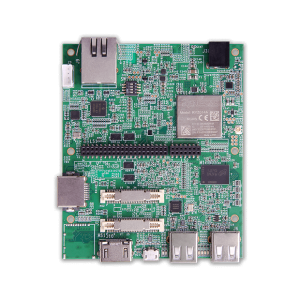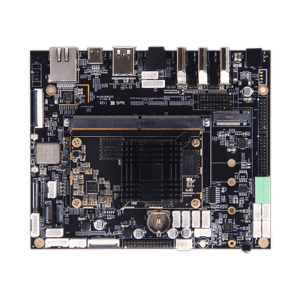System on Element vs. Single Board Computer: Critical Differences Explained
System on Element vs. Single Board Computer: Critical Differences Explained
Blog Article
Benefits of Process on Element for High-Performance Applications
Developing a new product usually involves extensive timelines, complicated models, and significant reference investment. For corporations seeking to accelerate this technique while maintaining supreme quality requirements, a embedded computer module presents an impressive solution. This lightweight module not just simplifies the development method but in addition assists increase solution growth cycles without reducing performance or reliability.

SoM: A Developing Block for Effective Product Development
A Process on Element (SoM) is really a complete processing element that encapsulates all the parts required to operate a specific application. It usually is made up of processor, storage, storage, and different essential peripherals such as for example connectivity alternatives and communication interfaces. The key advantageous asset of an SoM is its compact size, which makes it an easy task to incorporate into any solution design.
Streamlining Solution Development with SoMs
Traditionally, having a new product involves planning and building every component from scratch. This method may be time-consuming and resource-intensive, particularly for complex products.
What's a System on Module
A Process on Component, usually abbreviated as single board computer, is really a compact, incorporated world that comes pre-loaded with essential parts such as a microprocessor, memory, power management, and sometimes even connectivity options. Consider it as a pre-built foundation for the solution, allowing developers to focus on unique functionalities without reinventing the wheel.
Why Process on Component Advantages Product Development
Here really are a few ways a Process on Component somewhat boosts the product development process.
Simplifies the Design Process
Developing a custom board from damage requires time-consuming projects like choosing components, developing the world, and testing hardware. By adding various key functionalities, an SoM simplifies this process. Designers may concentrate on designing the initial areas of their item as opposed to fretting about low-level electronics complexities.
An illustration worthwhile considering is in IoT devices. Instead of planning every aspect, developers may use an SoM to incorporate vital IoT operates quickly, decreasing the general time and energy to market.
Decreases Risk
Custom electronics style inherently bears risks of errors and delays. Debugging and ensuring element compatibility may drag timelines. An off-the-shelf System on Element is pre-tested for functionality and consistency, lowering odds of mistakes and ensuring a well balanced foundation. Designers can confidently build upon that without worrying about the basics.
Reduces Costs
While upfront prices of an SoM may appear higher than some parts, it ultimately saves time and resource allocation, reducing charges in the extended run. Additionally, the accessibility to widely-used modules ensures scalability without requiring continuous redesigns.
Rates Up Prototyping

Rapid prototyping is required for companies aiming to iterate quickly and fit industry demands. An SoM allows quicker prototyping by providing a ready-to-use foundation. Clubs may quickly construct a model, test efficiency, and make improvements without waiting for considerable electronics style cycles.
Eases Maintenance
Process on Segments are designed to provide long-term help, which ensures compatibility over time. Upgrades or improvements to the component do not need a complete redesign, further accelerating future solution iterations.
Empowering Quicker Innovation
Adopting a Process on Element can revolutionize how items are developed. By lowering style complexities, minimizing dangers, and enabling scalability, corporations can deliver innovative options more efficiently. For industries wherever time to market is just a important full for accomplishment, establishing an SoM into the development method is a game-changing strategy. Report this page